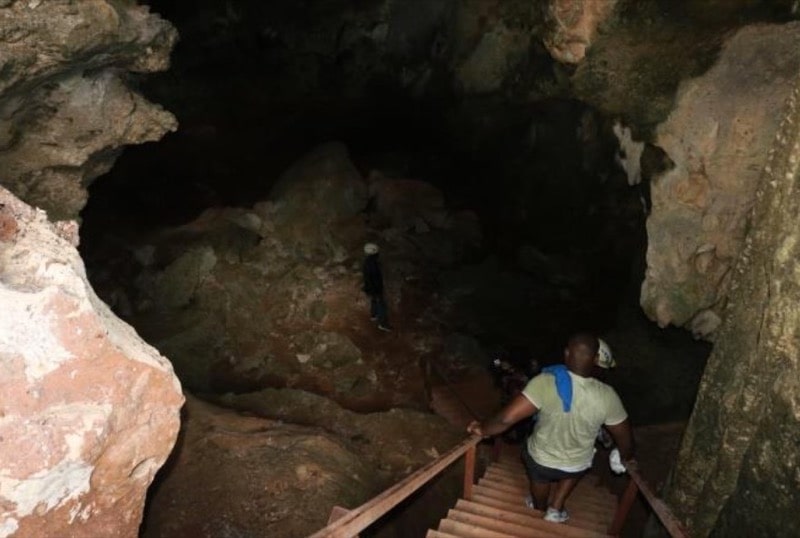
Marie-Jeanne cave
Description
Located 120 meters above sea level in the city of Port-à-Piment, about 61 km west of the city of Les Cayes in the southern department of Haiti, the Marie-Jeanne cave is currently classified as the largest underground heritage in Haiti and the longest cave in the entire Caribbean. With 5.3km of gallery explored on five geological levels, the Marie-Jeanne cave forms a network with 9 entrances on 4 hectares and stands out as the most visited cave in the country. From the city center of Port-à-Piment, it takes about twenty minutes to walk up a small hill that once bore the name of “La Voûte”, but is now called Marie-Jeanne, due to the importance of this ecotourism site that is made up of more than thirty chambers. It takes ten minutes of ascent to reach the entrance of this leafy cave, hidden behind trees and stalks that seem to protect a treasure; which adds to the natural charm of the place and contrasts with what we are going to discover when entering it. Named in memory of Marie-Jeanne Lamartinière, the Marie-Jeanne cave seems to have existed since the time of the Taïnos, the first inhabitants of the island according to archaeological investigations. With an area of 31 hectares, the Marie-Jeanne Cave was declared a “Marie-Jeanne Cave protected area” by the presidential decree of August 7, 2013 and classified in the category of exceptional natural element. It contains two types of spaces: open-air spaces, that is, places illuminated by sunlight; and closed spaces, which are immersed in total darkness, where silence resonates under the incredible rhythm of an indomitable nature.
Biodiversity
The Marie-Jeanne cave is made up of more than 56 superimposed chambers, some larger than others with impressive originality. In the early 1970s, a group of speleologists named a series of rooms the Starry Vault, which serve as the first welcoming room to orient visitors to the inner parts of the cave and give the impressive illusion of a star constellation. There are also: the cake room, formed by a strange architecture in the shape of a real cake; the “Hades” room or god of the underworld, which due to its 35 m depth is considered one of the most inaccessible rooms in the Marie-Jeanne cave; the Totem room or genealogical space, which brings together sculptures and symbols fragmented by the ingenuity of nature; the fraternity room, with ventilation that makes you want to relax; the Pearl Corner, a room decorated with pearls; and many other rooms as mythical as they are extraordinary. With so much genealogical wealth cloistered in this gigantic underground labyrinth, it remains a true ecotourism attraction waiting to be discovered. The Marie-Jeanne cave is made up of a series of crystallizations such as stalagmites and stalactites ingeniously well sculpted by nature, which give rise to original architecture in each of the chambers, some of which have preserved Taino origin fabrications and even ammonites. Endowed with a small freshwater lake on the fifth level, the Marie-Jeanne cave has a unique subterranean ecosystem that could give rise to additional studies, and allows the development of exceptional biodiversity with a small wildlife including bats, mice, birds, beetles, etc.
Ecotourism potential
According to some researchers, the formation of this underground structure dates back about 60 million years. Archaeological traces and signs engraved on the limestone and silica stone walls, as well as symbols and hieroglyphs, date from pre-Columbian times. The Marie-Jeanne cave is located on a hill of dense and curious vegetation, well protected in the secret of a capricious nature. The Marie-Jeanne cave contains 56 rooms that allow you to contemplate the wonders of tropical nature. Inside there are also mollusks, an elephant, a pelican, a silly dog, virgins, penises, a dress and an alligator naturally carved in stone. Guided tours allow you to explore the first three levels. These last between 1 and 4 hours, leaving plenty of time to venture out and explore the depths of this unique tourist attraction.



